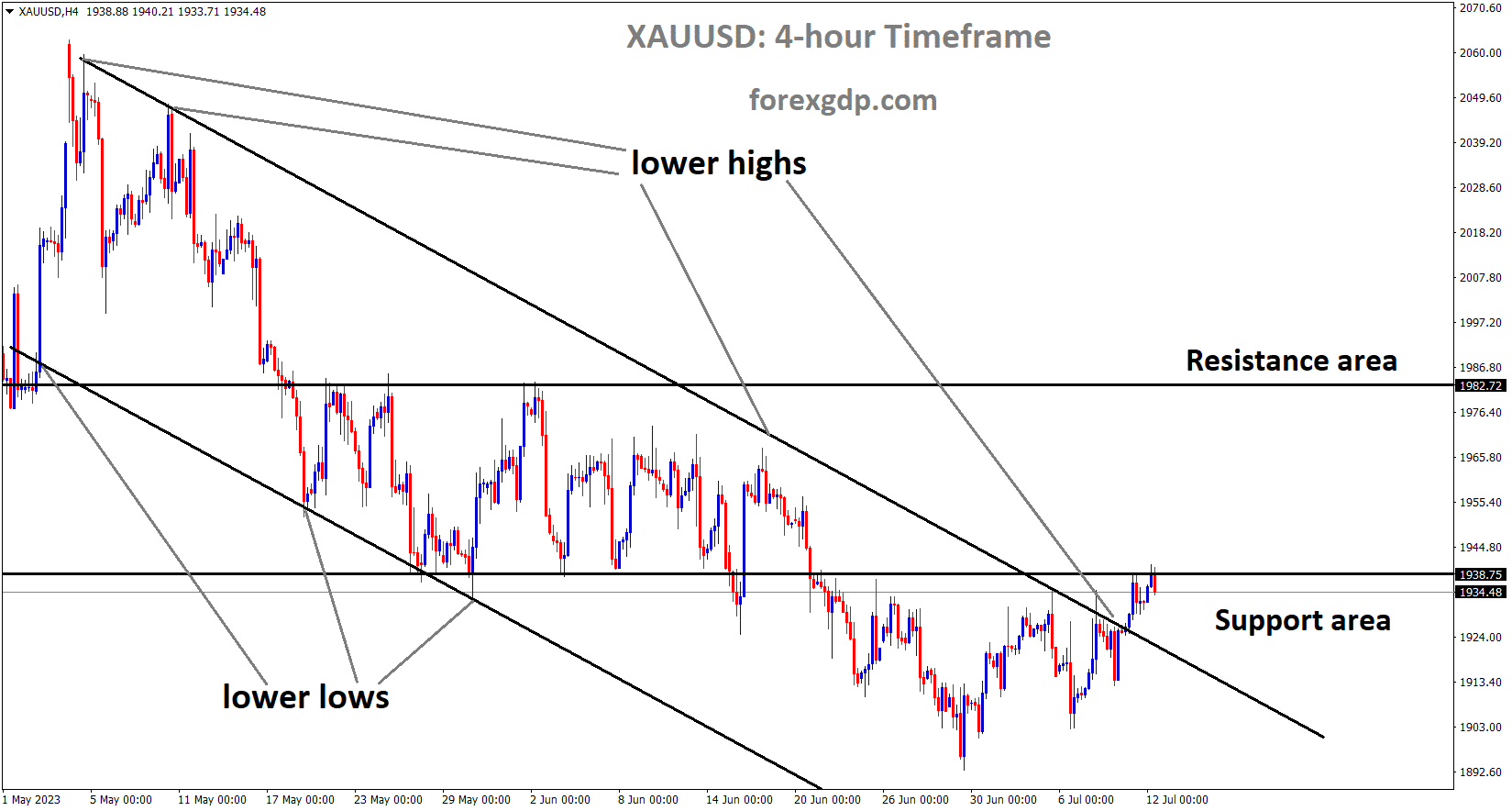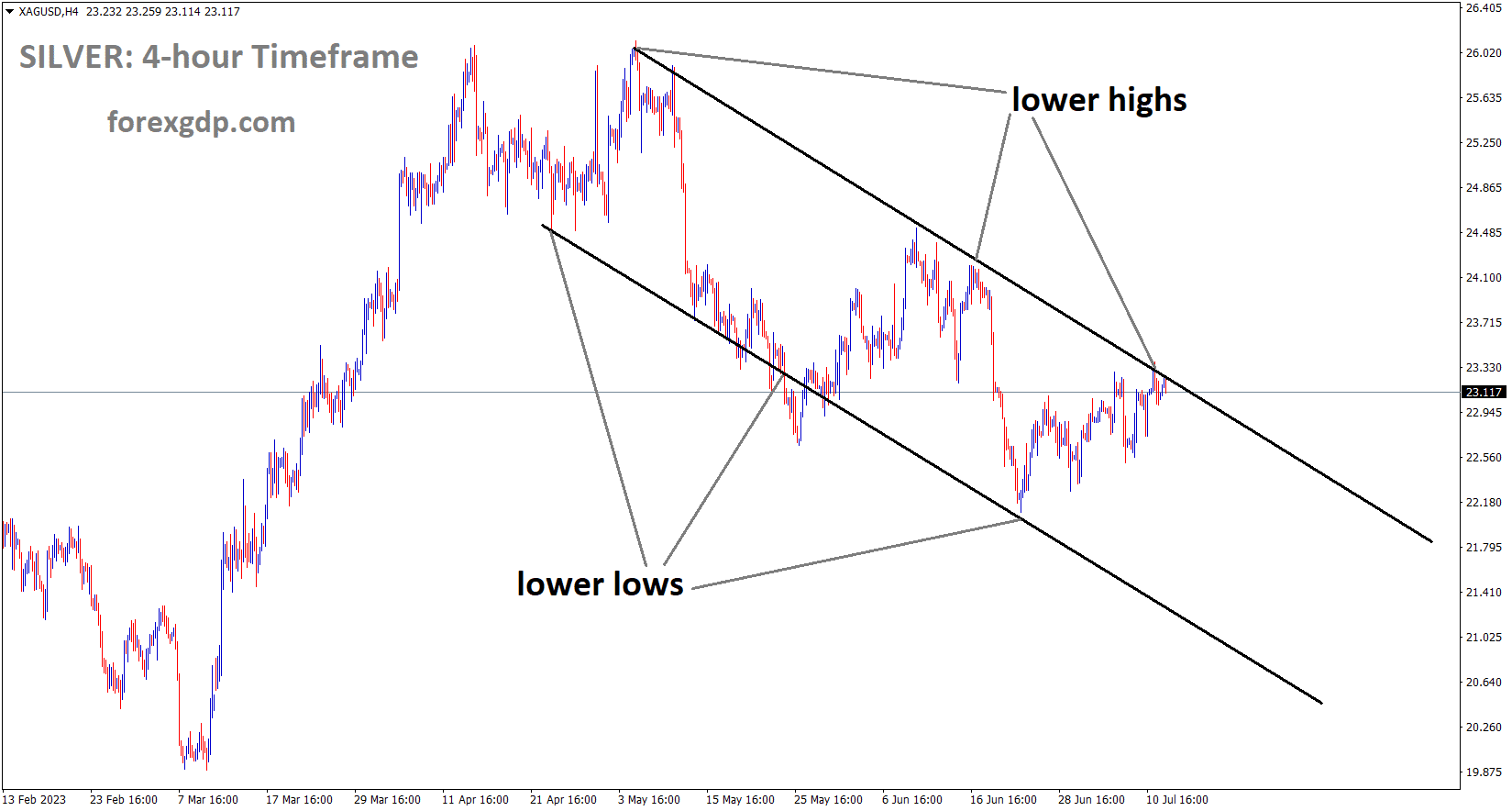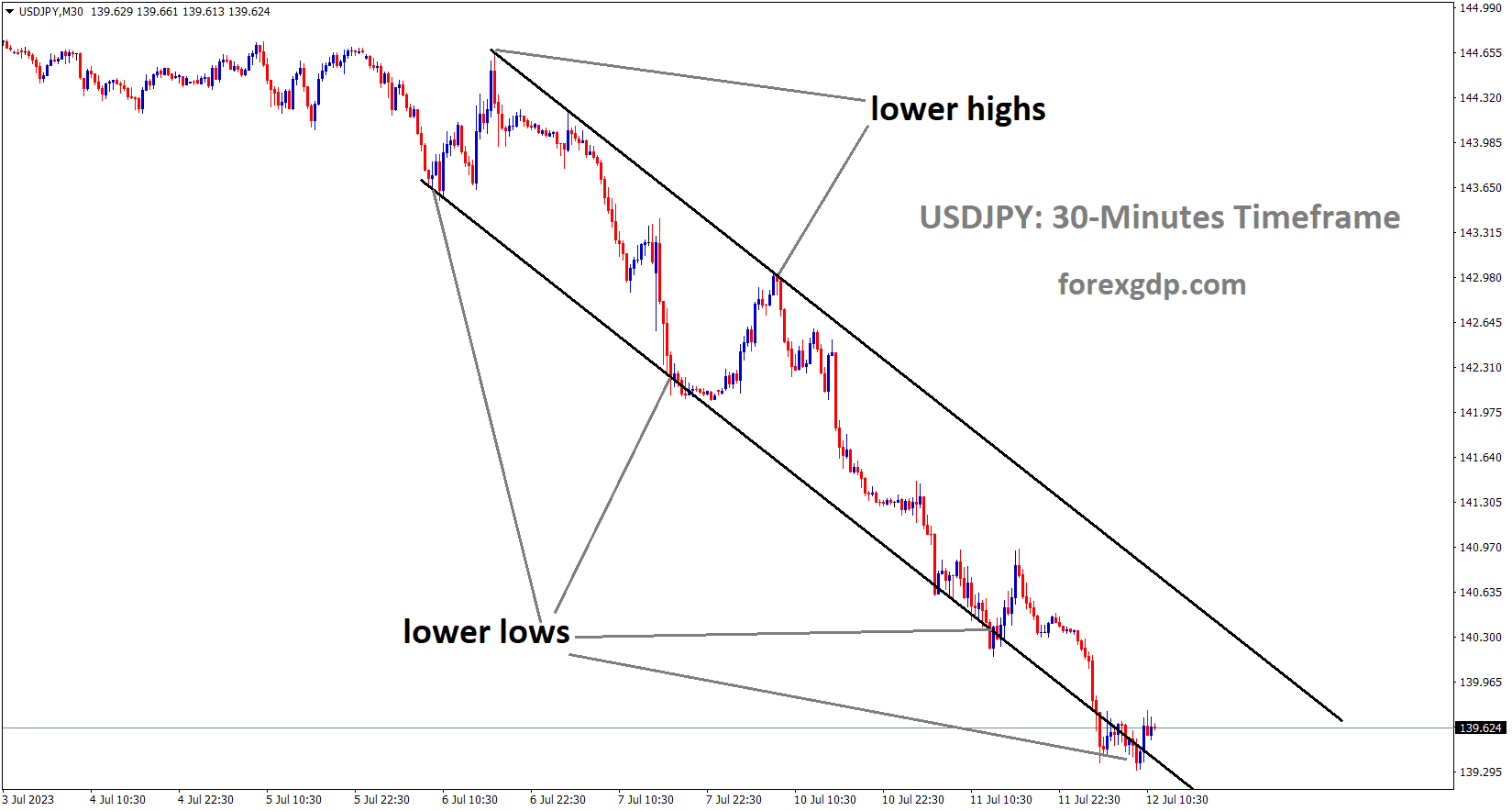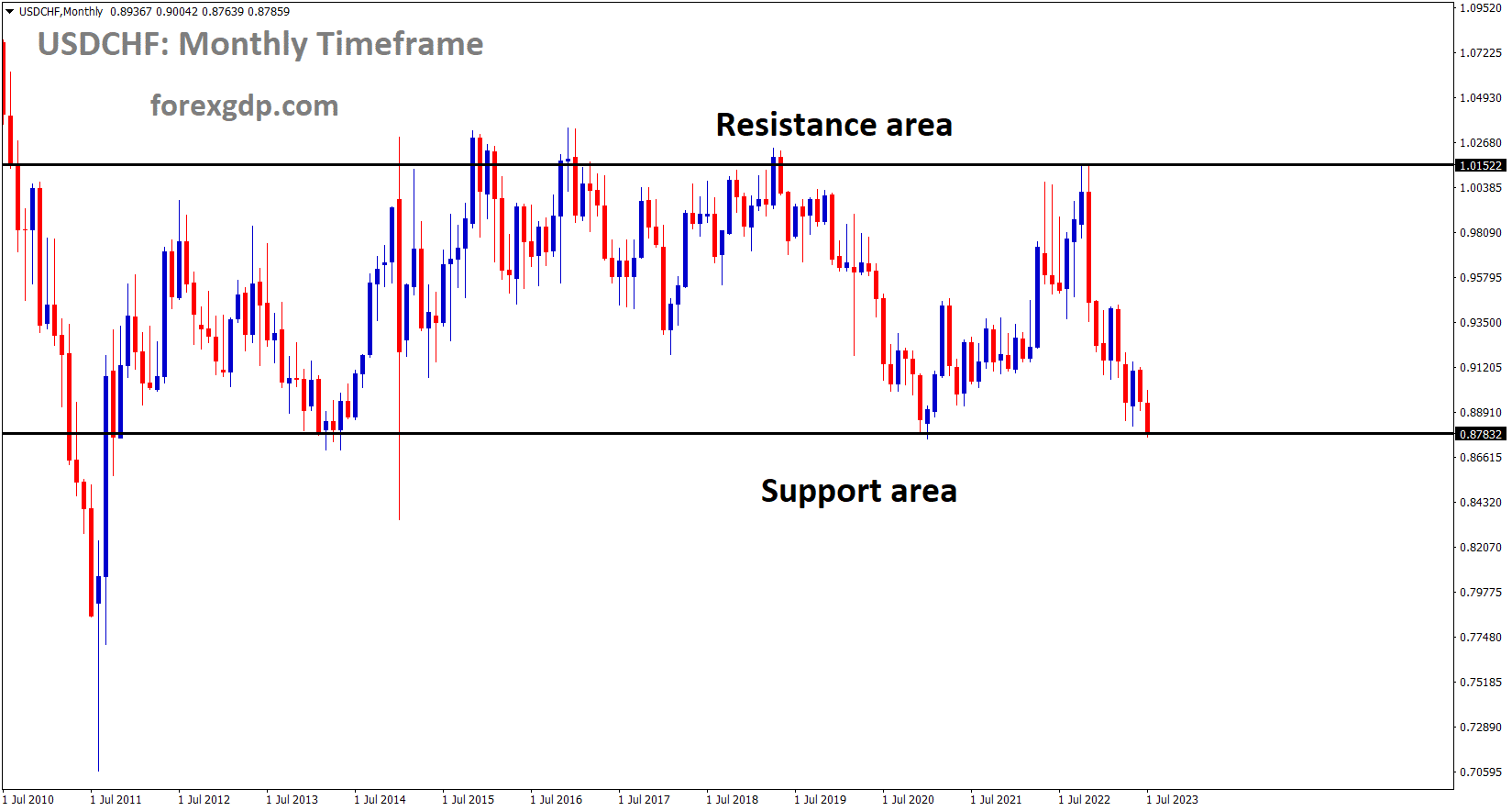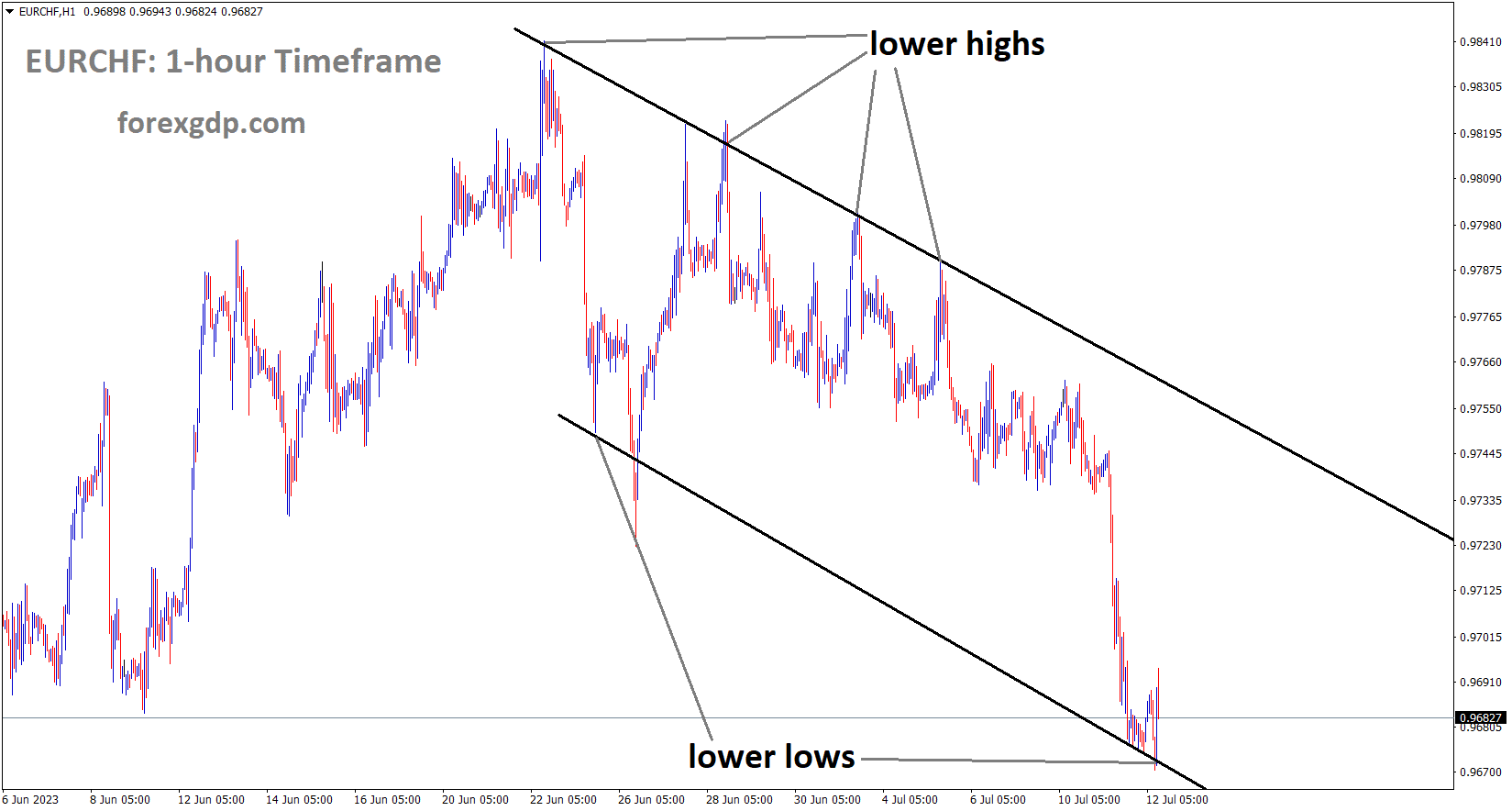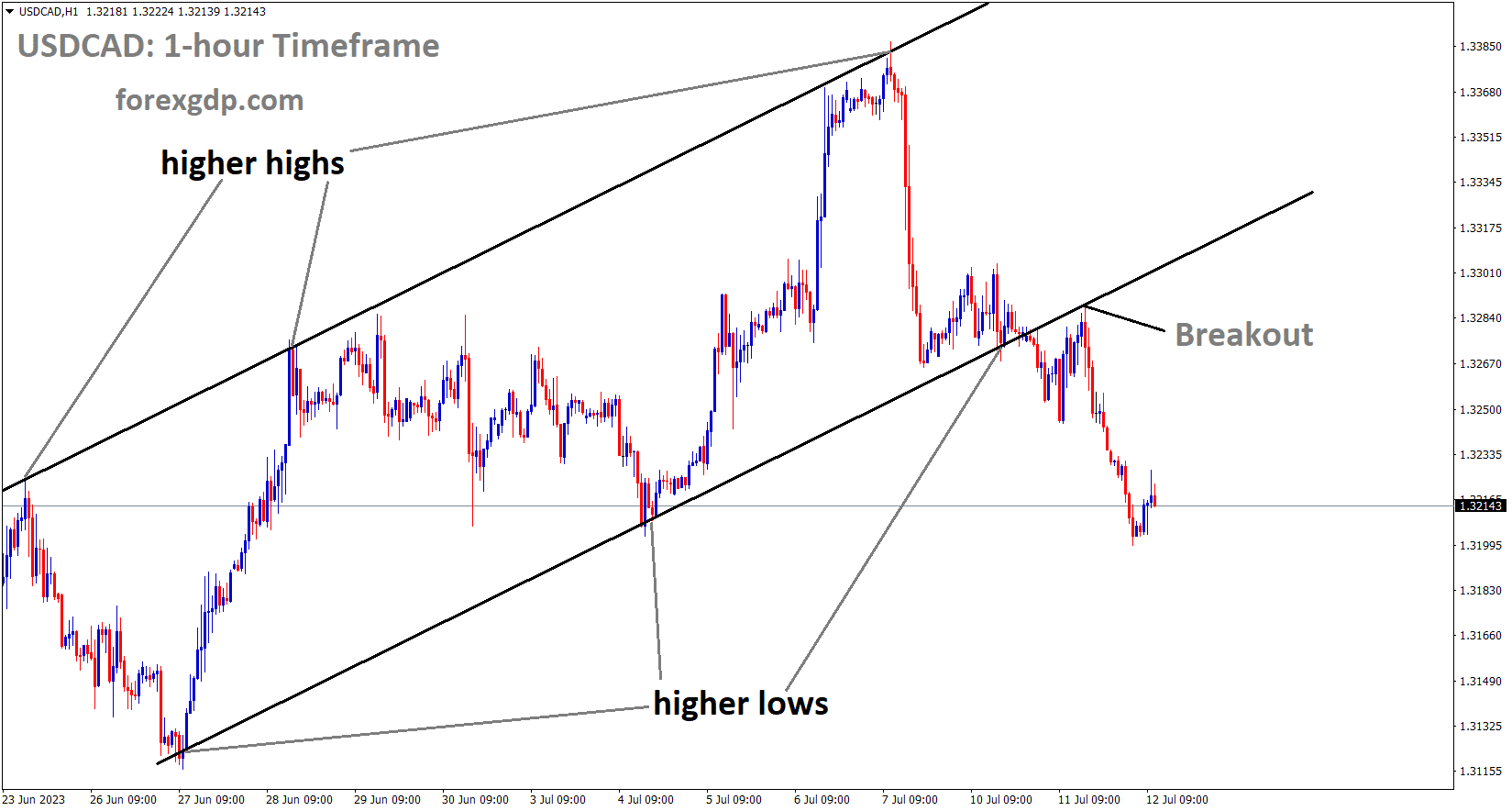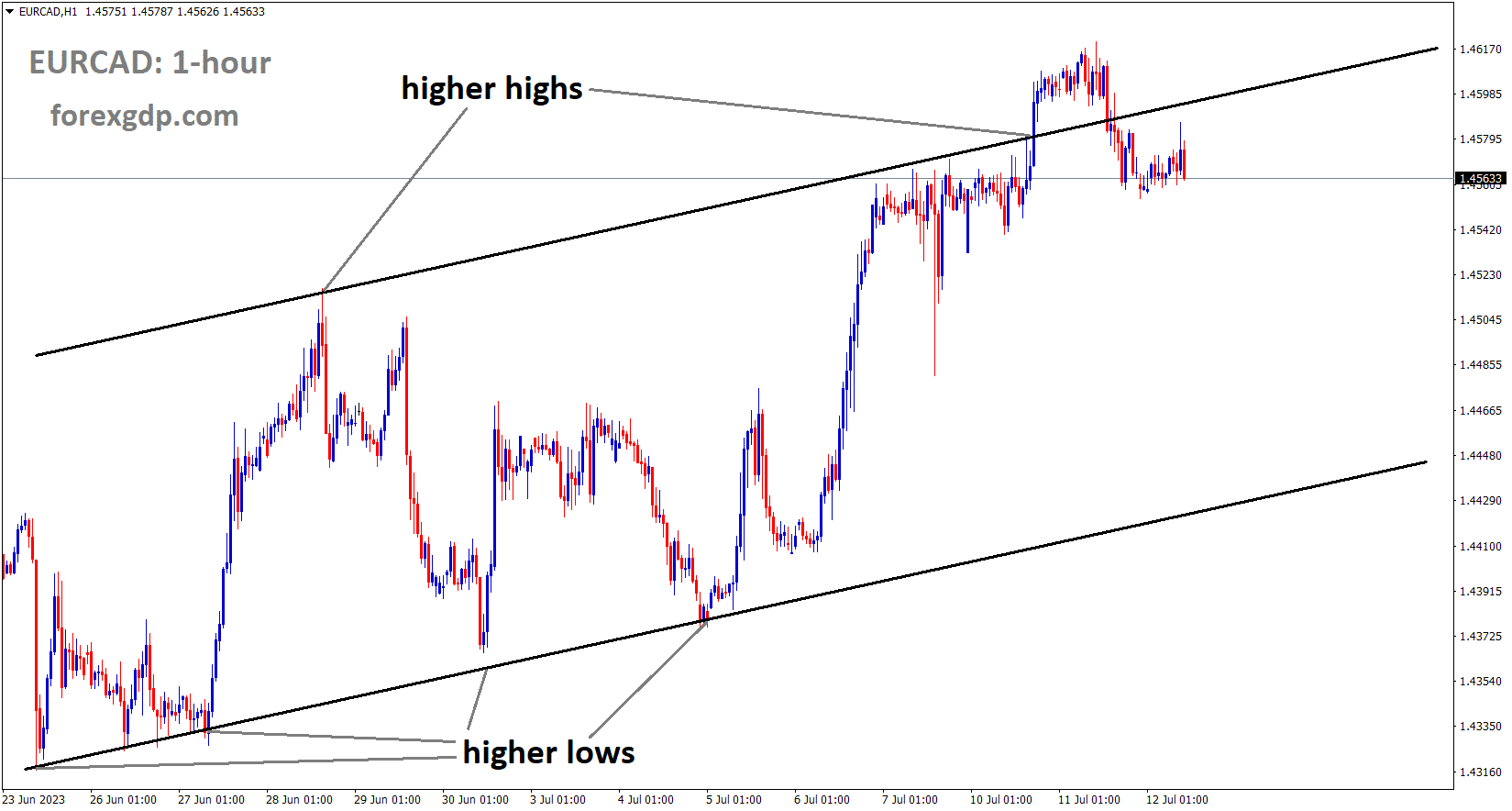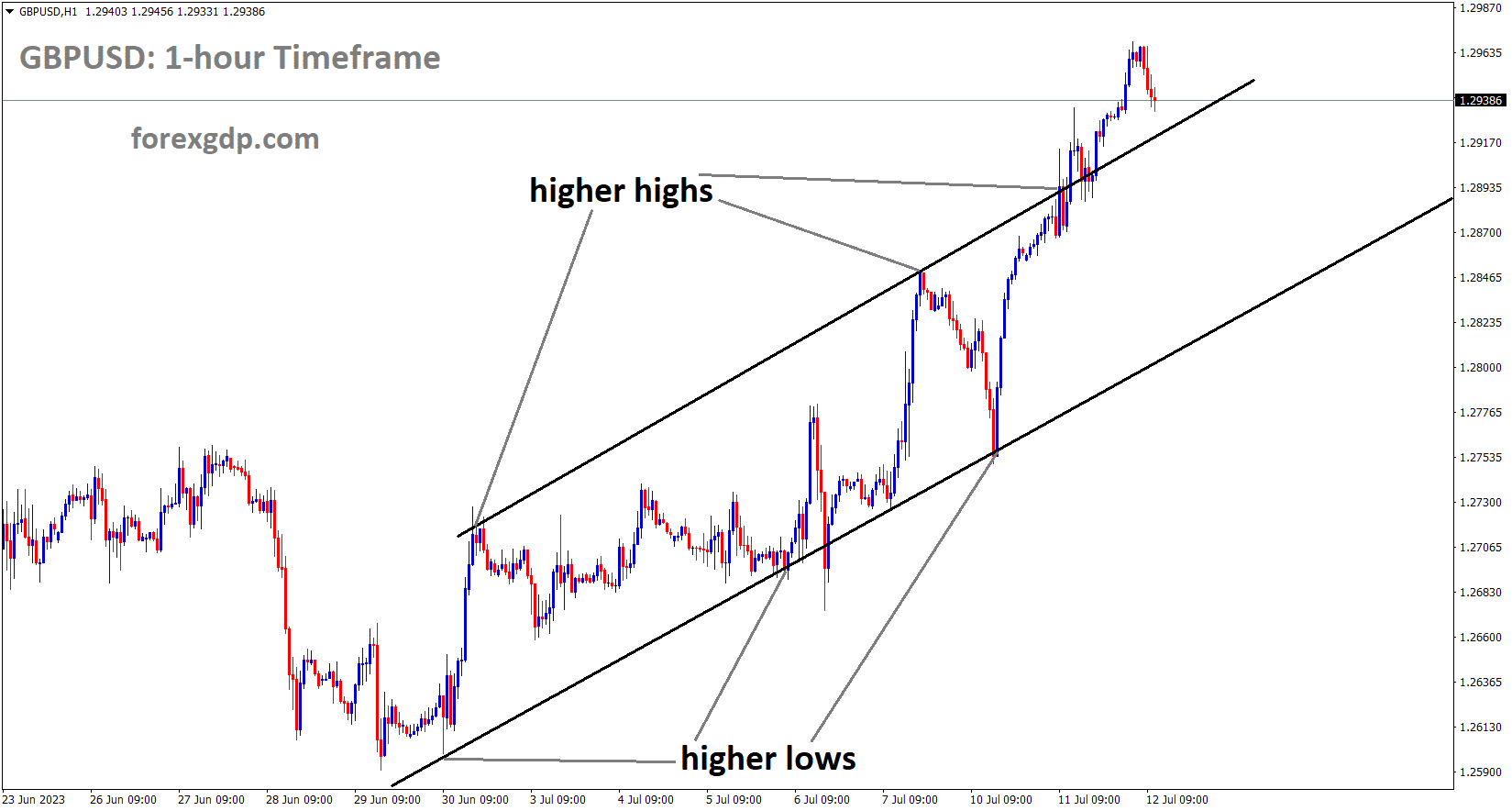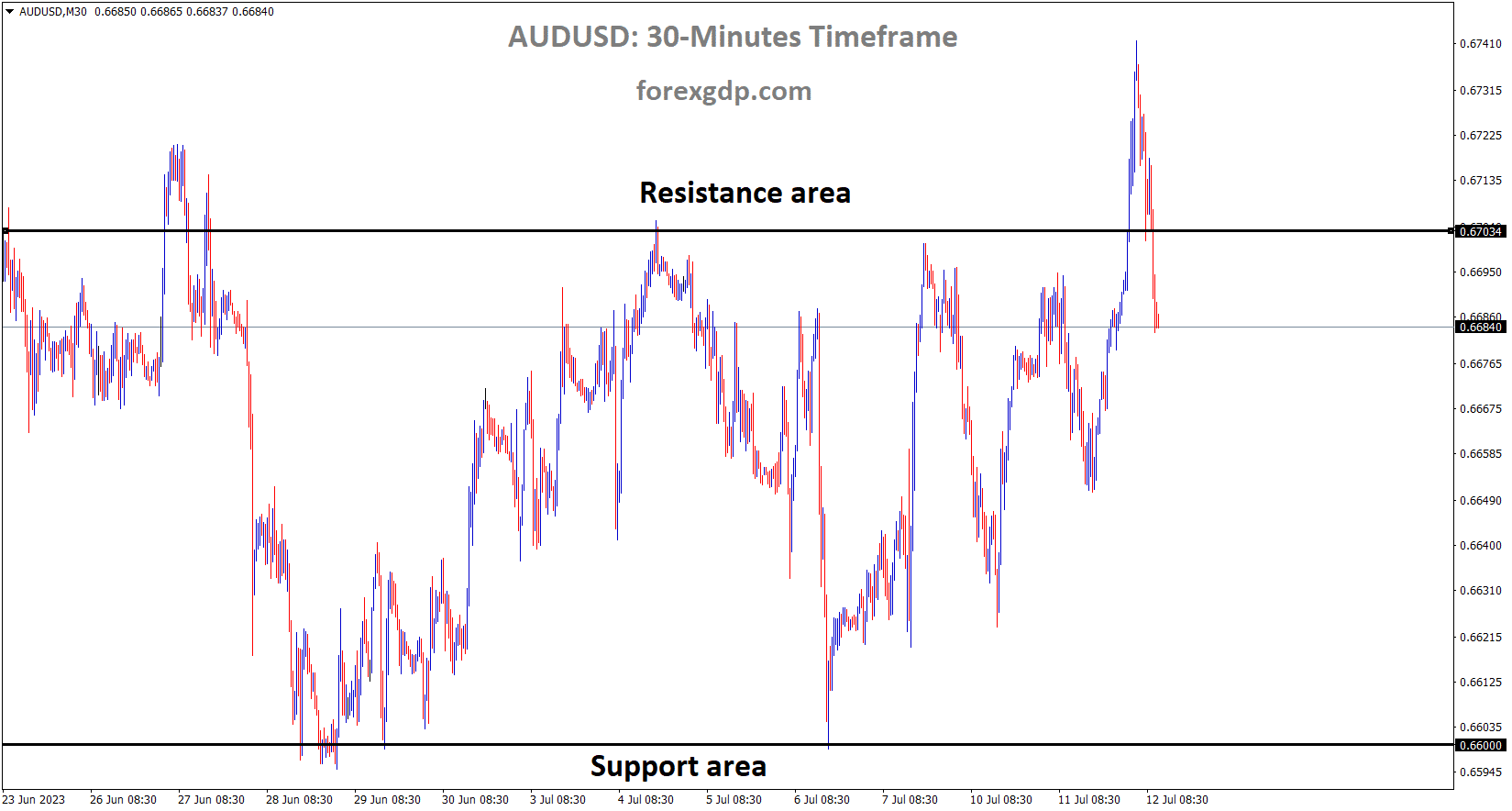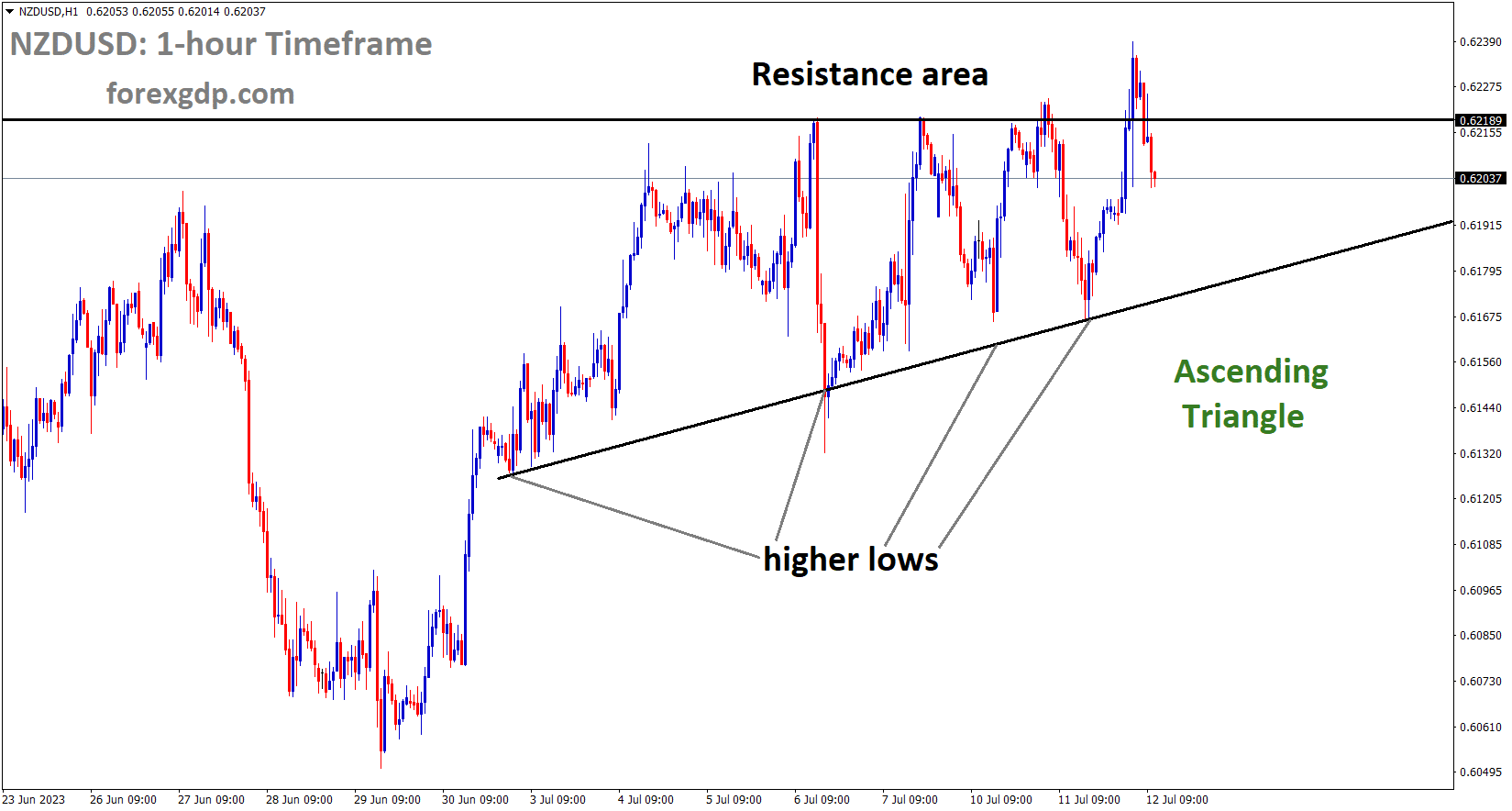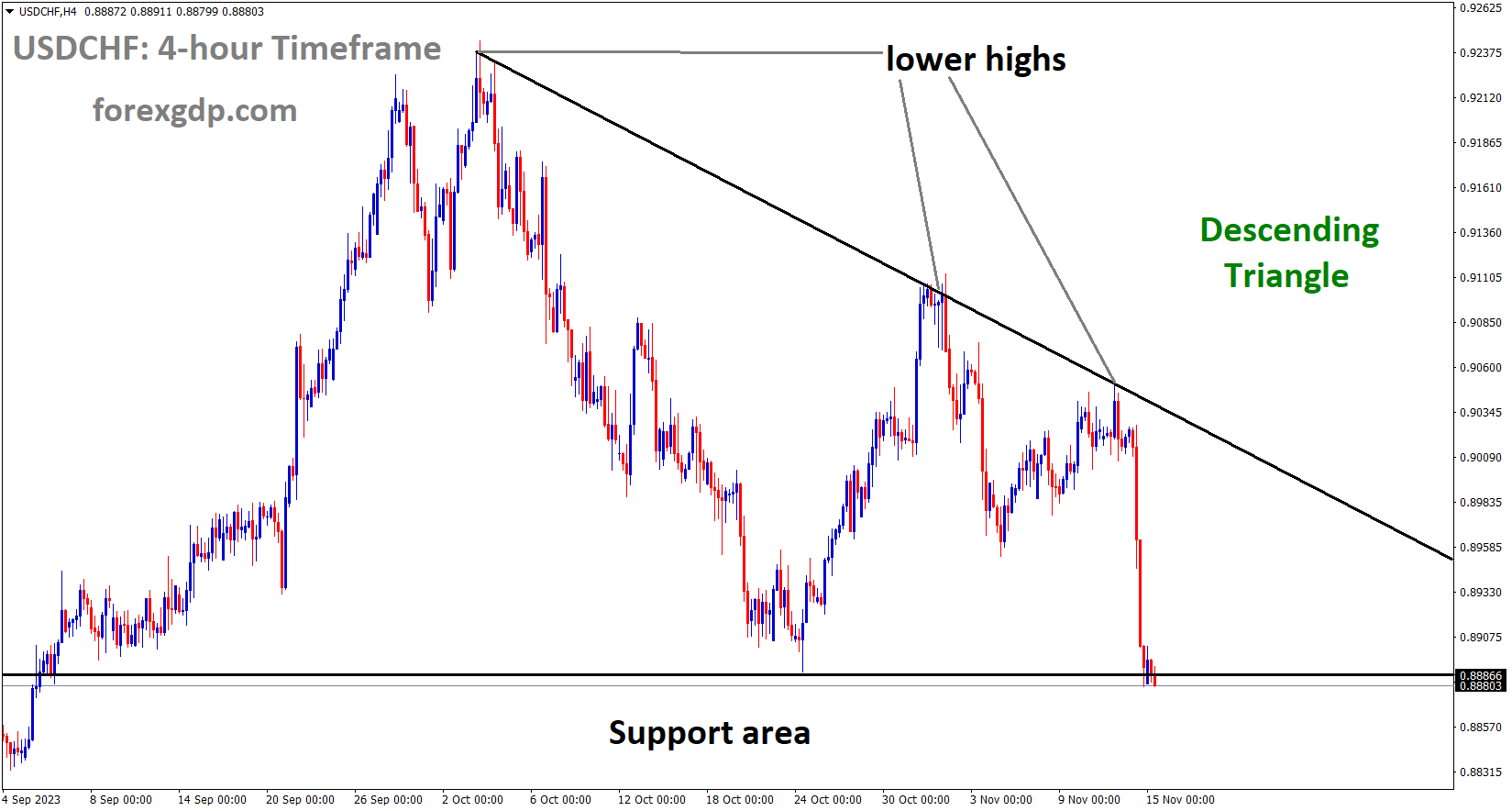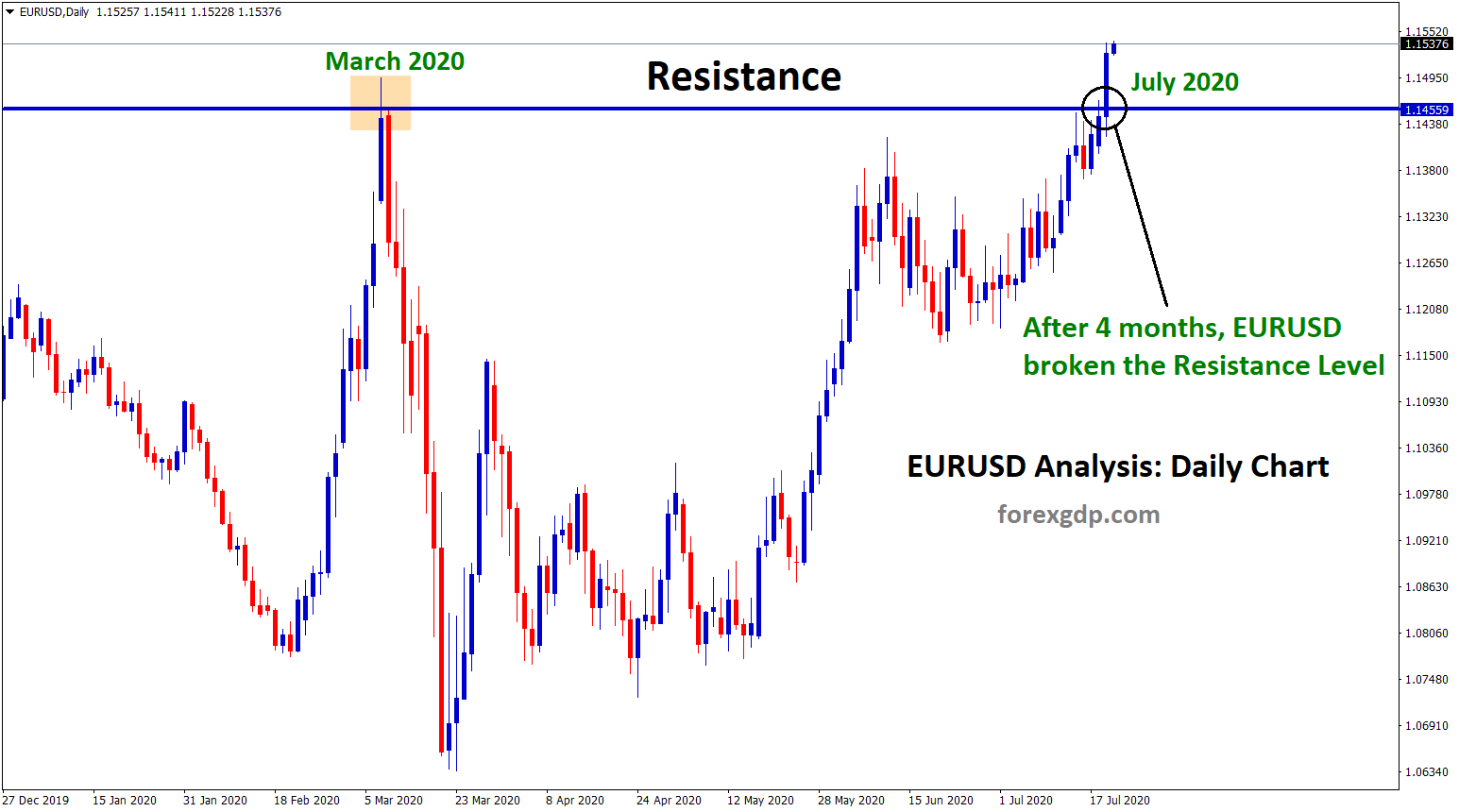GOLD Analysis
XAUUSD Gold price is moving in the Descending channel and the market has reached the lower high area of the channel.
Prior to the release of the US CPI data scheduled for today, gold prices are consolidating. A pause in the FED’s rate hike after the month of July is more likely. Last week’s US labour market data came in lower than anticipated, which affected the US dollar until this week.
Early in the European session, the price of gold XAU/USD printed at $1,941.60, a new three-week high. The US Dollar Index DXY is under tremendous pressure due to expectations of further deceleration in the United States Consumer Price Index CPI data, and the precious metal is gaining strength to confidently break above $1,940.00. After a bullish Tuesday, S&P500 futures have become choppy, reflecting for the time being a calm market sentiment in the overall positive risk profile. Ahead of the release of the second-quarter corporate earnings and inflation data, investors have abstained. The yields on US 10-year Treasury notes have slightly decreased to around 3.96%.
SILVER Analysis
XAGUSD Silver price is moving in the Descending channel and the market has reached the lower high area of the channel.
Although the USD Index has found temporary support close to 101.35, the downside bias is still strong. Though it would probably be premature to write off the Dollar at this point, Commerzbank economists stated that. The Friday labour market report was not all that bad. We assume that the Federal Reserve Fed will raise its key rate once more at the end of July because the labour market is still too tight in their opinion. Investors, meanwhile, are solely focused on the inflation data. According to predictions, monthly and core inflation will continue to increase at a steady rate of 0.3%. Both the headline and core CPI annualised figures are anticipated to ease to 3.1% and 5.0%, respectively. Investors will pay attention to the Fed’s Beige Book as well as the inflation data.
USDJPY Analysis
USDJPY is moving in the Descending channel and the market has reached the lower low area of the channel.
According to the Bank of Japan, PPI data for the month of June decreased by 0.20% from the anticipated rate of 0.10% growth. Both the export price index and the import price index decreased, to 0.60 and 3.1, respectively. After price pressures ease and inflation slows, the Japanese Yen is valued.
Contrary to expectations for a 0.1% increase, the Producer Price Index (PPI) decreased by 0.2% in June, according to the Bank of Japan (BoJ). The annual rate was 4.1%, which is less than the 5.1% recorded in May and below the 4.3% market expectation. In comparison to the prior months, both the Export Price Index and the Import Price Index decreased by 0.6% and 3.1%, respectively. Against expectations of a 1% increase, the Cabinet Office reported that Machinery Orders fell 7.6% in May.
USDCHF Analysis
USDCHF is moving in the Box pattern and the market has reached the horizontal support area of the pattern.
The investigation into the dramatic demise of Credit Suisse and takeover by UBS was launched by the Swiss Parliament. Investigations concern FINMA, financial regulators, and senior Credit Suisse executives. Large bank failures in the Swiss region are a difficult problem to address; they must make the necessary corrections to prevent future recurrences.
EURCHF Analysis
EURCHF is moving in the Descending channel and the market has reached the lower low area of the channel.
To determine what went wrong prior to the dramatic collapse of Credit Suisse, once Switzerland’s second-largest bank, a rare parliamentary investigation in Switzerland is set to begin this week. The parliament, in a largely symbolic vote, rejected the government-engineered 109 billion Swiss franc ($122 billion) rescue package to enable the troubled bank’s takeover by UBS, leading to the establishment of the fifth such investigation in the nation’s modern history.
USDCAD Analysis
USDCAD has broken the Ascending channel in downside.
Prior to this week’s Bank of Canada monetary policy announcement, the Canadian Dollar strengthens. After Saudi Arabia and Russia agreed to reduce production, oil prices increased. Falling US Dollars help the Canadian Dollar and Oil Prices.
On Wednesday, the USDCAD pair experienced some selling pressure for the second day in a row and continued to decline in rejection of the 50-day Simple Moving Average SMA, which is located near the 1.3385 level, or the one-month high reached last week. Spot prices drop to a two-week low during the Asian session, around the 1.3200 level, as a result of the downward trajectory, which also marks the third day of a negative move in the previous four. The world’s two largest oil exporters, Saudi Arabia and Russia, announced supply cuts, which helped drive up crude oil prices to their highest level since early May. These supply cuts built on the overnight breakout momentum through the 100-day SMA. This in turn supports the commodity-linked Loonie, which, along with persistent selling of the US Dollar USD, adds to the offered mood surrounding the USDCAD pair. In fact, amid rumours that the Federal Reserve Fed is nearing the end of its current rate-hiking cycle, the USD Index DXY, which tracks the Greenback against a basket of currencies, plunges to a fresh two-month low.
Investors appear to be of the opinion that the US central bank has little room to further tighten monetary policy, particularly in light of the New York Fed’s monthly survey’s Monday finding that consumer inflation expectations for the coming year have fallen to their lowest point since April 2021. Therefore, the market’s attention will be fixed on the publication of the most recent US consumer inflation data, which is scheduled for later in the early North American session. The crucial US CPI report is likely to have an impact on assumptions about the Fed’s rate-hike trajectory going forward, which will ultimately fuel USD demand in the short term and give the USDCAD pair some significant momentum. In addition, Wednesday’s market participants will follow the Bank of Canada’s BoC monetary policy decision. Following encouraging signs from the domestic CPI report and June’s notable job growth, the Canadian central bank is anticipated to increase interest rates by 25 basis points. The comments made by BoC Governor Tiff Macklem at the press conference following the meeting will be closely examined by investors, which should add some volatility to the Canadian Dollar CAD and help forecast the near-term course of the USDCAD pair.
EURCAD Analysis
EURCAD is moving in an Ascending channel and the market has fallen from the higher high area of the channel.
The Euro EUR gains more momentum on the upside and climbs to new highs against the US Dollar USD, pushing the pair’s exchange rate to the 1.1040 area on Wednesday. In fact, the severe decline in the value of the dollar forces the USD Index DXY to fall to multi-week lows near 101.30, making it more likely than not that the 101.00 neighbourhood will be visited in the near future. Meanwhile, expectations for the continuation of disinflationary pressures in the US during June appear to be supporting additional upside in the pair and in the risk-associated universe in general. This could reignite speculation that the Federal Reserve will end its rate hike cycle soon.
However, recent strong results from important US fundamentals show a resilient US economy and a tight labour market, supporting the likelihood that the Federal Reserve will raise interest rates by 25 basis points at its meeting on July 26. Later in the month, the European Central Bank ECB is anticipated to follow suit and increase its policy rates by a quarter percentage point. The hawkish narrative from rate setters, which continues to favour further tightening in a context where inflation in the euro area continues to run high and well above the bank’s target, seems to be reinforcing the ECB’s stance.
In terms of domestic data, Spain’s final inflation figures revealed that the CPI increased 0.6% from May to June and 1.9% over the previous year. In the US, the MBA will report on Mortgage Applications in the week leading up to July 7 and the Fed will release its Beige Book in addition to the Inflation Rate. Additionally, Neel Kashkari of the Minneapolis Fed, Raphael Bostic of the Atlanta Fed, and Loretta Mester of the Cleveland Fed, all of whom are 2024 voters, are scheduled to speak later on Wednesday.
GBPUSD Analysis
GBPUSD is moving in an Ascending channel and the market has reached the higher high area of the channel.
Contrary to expectations, the average three-month bonus for earnings increased by 7.3% instead of 7.1%. Higher wages for UK labour help the UK Pound to perform better against Counter pairs.
The Pound Sterling GBP has encountered tenuous barriers close to a 15-month high near 1.2970 as the United Kingdom’s labour cost data has proven to be more stable than anticipated. The likelihood of a significant interest rate increase from the Bank of England BoE has increased, which has given the GBP/USD pair tremendous strength. The BoE knows that higher disposable income will give households more purchasing power, which will eventually lead to an increase in overall demand. Due to a labour shortage, UK businesses are increasing wages to entice new talent. Examining the employment data reveals that the unemployment rate has risen as businesses have started to refuse credit because of the higher interest rate attached. Given that increased wage pressures are sufficient to offset the effects of an increase in the unemployment rate, it appears that the odds of a large rate increase by the BoE will remain high. The United Kingdom labour cost has performed hotter than anticipated, with the Pound Sterling auctions comfortably above 1.2900. Investors were expecting a decline to 7.1% in the three-month average earnings, which have remained constant at 7.3%.
Claimant Number Change increased to 25.7K while claims decreased by 22.5K last month. Compared to expectations and the previous release of 3.8%, the three-month unemployment rate has increased to 4.0%. Increased wage pressures are sufficient to counteract a marked increase in the unemployment rate.
Market participants anticipate that the Bank of England’s interest rates will peak between 6.25 and 6.50%. BoE Governor Andrew Bailey stated on Monday that the institution will continue to monitor the labour market in an effort to control inflation. The central bank is working to create a climate of price stability, Andrew Bailey reaffirmed. Radio United Kingdom According to Jeremy Hunt, the government and the central bank will do what is necessary, for as long as necessary to bring inflation back to its 2% target. Although inflation in the British economy has decreased from its peak of 11.1%, UK Prime Minister Rishi Sunak’s prediction that it would have decreased by half by year’s end has not been met.
According to a British Retail Consortium BRC survey, households’ budgets have been strained by higher food prices, which has decreased demand for expensive goods.
Due to the fact that the rate of inflation is outpacing the rate of labour costs, households are currently under significant price pressure. Andrew Bailey pleaded with industry regulators last week to put an end to overcharging consumers for fuel. The Financial Policy Committee FPC minutes on Wednesday and the Industrial and Manufacturing data May on Thursday follow the release of the labour market data, making this week’s economic calendar in the UK jam-packed with activities. Gross domestic product GDP and industrial production are anticipated to decline by 0.4% each month. Additionally, a 0.5% decline in manufacturing production is observed. While there is a positive appeal for risk-sensitive currencies, market sentiment is quite bullish.
The US Dollar Index DXY has extended its four-day losing streak as investors hope the Federal Reserve Fed will only raise interest rates once more.
In a speech at the University of San Diego, Cleveland Fed President Loretta Mester noted that the economy has shown more underlying strength than anticipated earlier this year, and inflation has remained stubbornly high, with progress on core inflation stalling, according to Reuters. The US Consumer Price Index CPI will be closely watched this week. According to the preliminary report, the monthly headline CPI increased at a faster rate of 0.3% compared to the previous rate of 0.1%. Also anticipated to keep pace with the headline CPI is core inflation, which excludes the cost of food and oil.
AUDUSD Analysis
AUDUSD is moving in the Box pattern and the market has fallen from the resistance area of the pattern.
At the Economic Society of Australia Business Lunch in Brisbane, Governor of the Reserve Bank of Australia (RBA) Philip Lowe will discuss The Reserve Bank Review and Monetary Policy. Deadly committed to bringing inflation back to the desired level. If asked, I would be honoured to remain governor. certain that higher interest rates are having an effect. Keep an open mind when deciding whether to tighten more.
NZDUSD Analysis
NZDUSD is moving in an Ascending triangle pattern and the market has fallen from the resistance area of the pattern.
The RBNZ did not raise interest rates today and has stopped the rate cycle since October 2021. RBNZ decided to put interest rates on hold in order to survive the economy due to a slower GDP growth rate and lower consumer demand. The expected level for the Q1 CPI was 6.7%, and the Q2 CPI data is scheduled for release on Wednesday of the following week.
After the Reserve Bank of New Zealand RBNZ held rates steady at 5.50% at its monetary policy committee meeting MPC today, the New Zealand Dollar declined. On the hope of future domestic economic conditions being less dire, it has since recovered. The overnight cash rate OCR had previously been increased by the RBNZ 12 times since the initial increase in October 2021. Following losses at the open, the S&P/NZX 50 equity index for New Zealand increased on the news. With the US Dollar falling broadly to begin the Asian session, the Kiwi Dollar had made some progress prior to today’s decision. Following the OCR decision, the Australian and Japanese Yen were the two currencies where the initial weakness was most noticeable. After edging 89.70 at this time last week, AUDJPY traded under 86.50 today. It has more than 87.00 back now.
The 200-day Simple Moving Average SMA, which is currently at 1.0834, is the target for the AUDNZD, which has increased significantly to move above 1.0830. If it is convincingly broken above, bullish momentum could develop. Here are the current prices. The second quarter reading of the New Zealand CPI will be announced on Wednesday. The first quarter reading of 6.7% was below expectations. The RBNZ’s inflation target ranges from 1 to 3%. The market’s perception of many Western central banks, which may be reflected in today’s pause in the hiking cycle, is that an extended period of “wait and see” may be in store once policy settings are deemed to be sufficiently stringent. The Federal Reserve held off on tightening at its June Federal Open Market Committee FOMC meeting, as did the neighbouring Reserve Bank of Australia. The likelihood of another rate increase from the RBNZ for the foreseeable future has decreased, according to the New Zealand interest rate market.
Don’t trade all the time, trade forex only at the confirmed trade setups.
Get Live Free Signals now: forexgdp.com/forex-signals/

